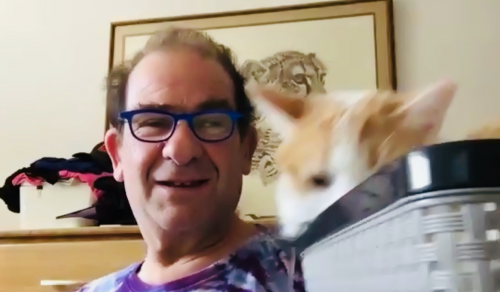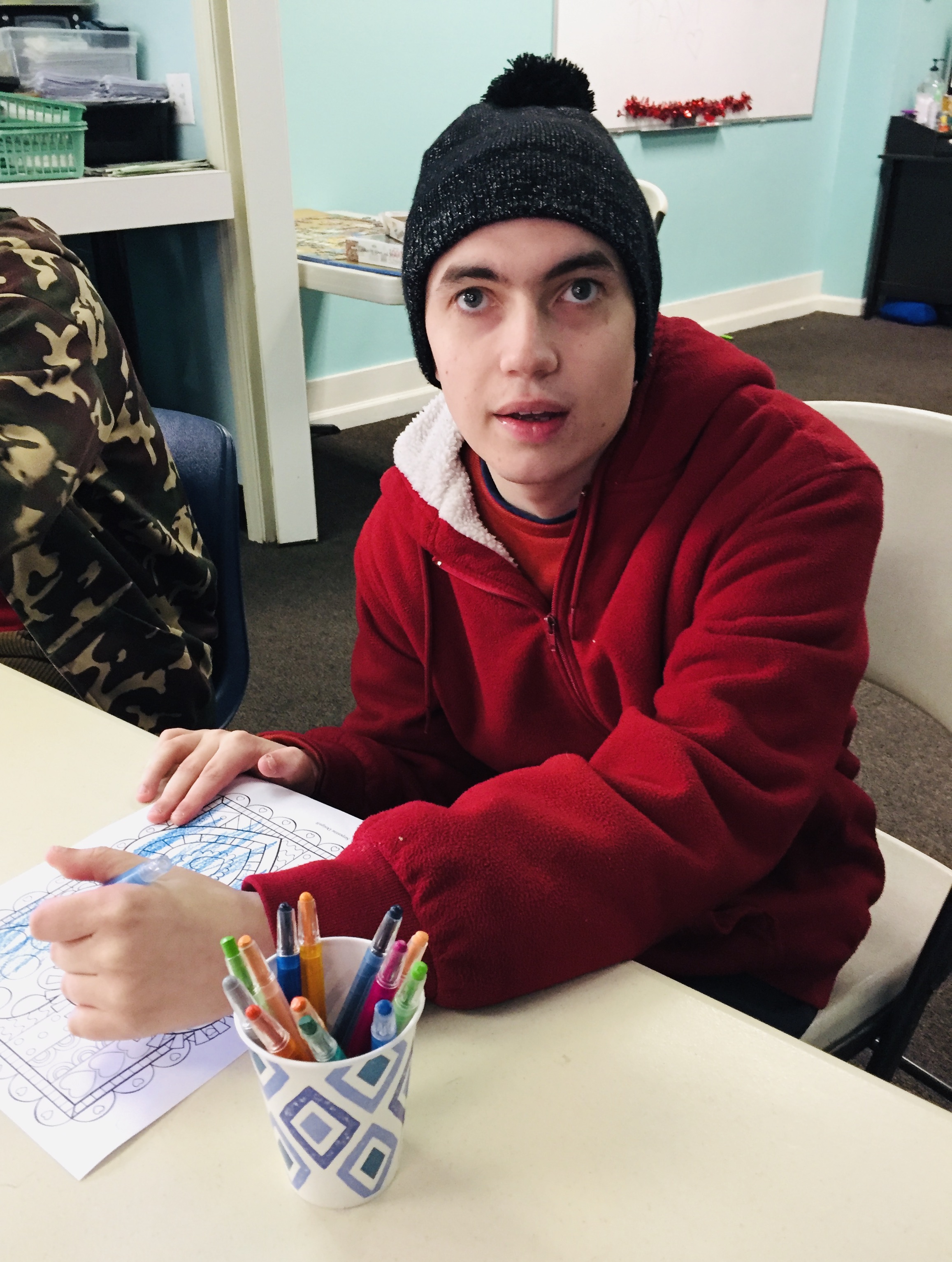
| Home |
| About Us |
| What's New |
| CHAS Classes
|
| Specialized
Day Programs |
| Articles |
| Magazines |
| Links & Resources |
| Contact Us |
| Work For Us! |
SPECIALIZED DAY PROGRAMS
Profiles | Success Scheduling | Curriculum Pages
Our approach emphasizes a very powerful connection between BELIEF and BEHAVIOR.
People BELIEVE messages about themselves that they get from their environment.
People BEHAVE consistently with messages about themselves that they BELIEVE.
Every person who receives a service from CH&S comes to us with an informational packet a foot high that defines them by their disabilities, misbehaviors, and limiting conditions.
These understandably are the messages about themselves that they BELIEVE… and often they BEHAVE accordingly.
The Positive Personal Profile (PPP) is a simple one-page document that focuses upon the person, accentuating his/her qualities and potential in strictly positive terms. The very purpose of our environment is to make that PPP live and breathe! Everyone at CH&S has a PPP. Here are some examples:
| Courtney MacDougall | Courtney |
|
Courtney can always be counted upon to do a good job. She is a great role model as she keeps it professional; she keeps it fun; and she has a healthy lifestyle. Courtney has many skills and interests. She is an expert when it comes to country music and John Travolta movies among other things. |
is efficient and productive |
| is intelligent and insightful | |
| is compassionate | |
| is charming | |
| is beautiful | |
| is classy |
| James Mendoza | James |
|
Juan has a delightful sense of humor and a charm that is all his own. He is a person who is immediately likeable. Another thing that can be said for Juan is that whatever job he is given, he always does his best. |
is professional |
| is friendly | |
| is smart | |
| is capable | |
| is respectful of others | |
| is cool! |
| David Friedlander | David |
|
If you are interested in knowing about Bay Area sports, he is absolutely the man you need to see. And did we mention? There isn’t a puzzle on the planet this guy can’t put together. In fact, David Friedlander is indeed a Renaissance Man… with more talents and interests than you can count! On top of all that, he is maybe most admired for the excellent example he sets for others with his professionalism, his listening skills, and his integrity. |
is elegant |
| is very intelligent | |
| is caring & considerate | |
| is a fascinating conversationalist | |
| is a negotiator | |
| is an aficionado extraordinaire! |
| Thomas Vesser | Thomas |
 Thomas Vesser is a truly class act. He is what everyone looks
for in a professional: intelligent, compassionate, poised, and fun to be around. He definitely brings
out the best in others… and he does it in his own unique and compelling style. On top of being a great
worker, Thomas is known as a dedicated and talented artist. He is also respected for his skills as a
diplomatic problem-solver and he is sought out for his amazing wit. Thomas Vesser is a truly class act. He is what everyone looks
for in a professional: intelligent, compassionate, poised, and fun to be around. He definitely brings
out the best in others… and he does it in his own unique and compelling style. On top of being a great
worker, Thomas is known as a dedicated and talented artist. He is also respected for his skills as a
diplomatic problem-solver and he is sought out for his amazing wit. |
is kind and considerate |
| is a great listener | |
| is friendly and funny | |
| is an excellent role model | |
| is wise and insightful | |
| is very patient and reasonable |
| John Gunion | John |
 John is a valuable addition to any community
because he models happiness and joy. He is blessed with an enormous capacity to appreciate and, in
return, he is appreciated and dearly loved by all. John is truly a uniter; not a divider. His list of
pastimes and passions just keeps growing and growing. He loves books, basketball, and participating in
classes, to name a few. Everything John does, he does with a “good feeling” that is both contagious
and downright inspirational. John is a valuable addition to any community
because he models happiness and joy. He is blessed with an enormous capacity to appreciate and, in
return, he is appreciated and dearly loved by all. John is truly a uniter; not a divider. His list of
pastimes and passions just keeps growing and growing. He loves books, basketball, and participating in
classes, to name a few. Everything John does, he does with a “good feeling” that is both contagious
and downright inspirational. |
loves his family |
| loves to laugh | |
| loves to dance | |
| loves women | |
| loves Da Bears | |
|
Is all about love! |
| Yvette Scholtz | Yvette |
|
In addition, she consistently demonstrates academic excellence. Yvette likes to exercise and eat right and it shows… because she looks great. Yvette is appreciated for her wonderful ability to appreciate others and the humor in things. |
is fun to be with |
| is a lively wit | |
| is a success! | |
| is an excellent role model | |
| is a productive professional | |
| is a caring and compassionate friend. |
| Jake Severin | Jake |
|
He is kind and understanding toward others, always willing to share, always willing to care, always does his part, and always keeps his word. Everyone feels better when Jake is around! |
is a family man |
| is a professional | |
| is so good looking | |
| is a real swashbuckler | |
| is a star student | |
| is a comedian |
| Katie Church | Katie |
|
Katie definitely brings out the best in others with her charm, kindhearted grace, and thoughtfulness. She is fun to be around and makes everyone feel included. Katie really takes funny to the next level. Just when you least suspect it, she will pop in with something hilarious that will have the whole room rolling. She promotes cheer wherever she goes! |
is a star! |
| is devoted to her friends and family | |
| is silly and fun | |
| is cool and classy | |
| is "the hostess with the hostess" | |
| #awesomesauce |
| Success Scheduling at CH&S |
Remember that people believe messages about themselves that they receive from their environment; and they behave consistently with messages about themselves that they believe!
CH&S is an environment. As such, we recognize that we are in a powerful position to assist people in defining themselves by their positive attributes; thereby breeding self-fulfilled prophesies of happy, productive citizens!
To do this, we rely heavily upon schedules that bring out these positive attributes in no uncertain terms
because people know who they are by what they do. I can swear up and down that you are a fisherman; but you
will not believe it unless, at some point in time, you notice that you are actually fishing! Success
Scheduling is a blueprint and a belief system for structuring up a genuinely positive, purposeful, and
enriched learning environment.
Here are the components to the Success Scheduling
Model:
1. Positive Personal Profile… The PPP is that one page blurb about the person in clear and credible terms. It is the message that you and your environment needs to “sell”. Everything predicates from this.
2. Functional Analysis… Identify the function of behavior within context. Identify accordingly skills and replacement behaviors to teach. Determine accordingly effective and consistent reactions and “preactions”.
3. Activity Logs… Keep a running record of Activities offered and those in which the person participated. Reference this information when creating menus and/or planning schedules; and in evaluating effectiveness, etc. Share this information with the person so that he has a chronological sense (and appreciation) of his engagement level.
4. Reinforcement Menu… List reinforcers specific to the person and rank according to potency. Continue to add to the menu as more reinforcers are identified.
5. Menu of Schedule Options… Create an individualized list of activities, events, etc. to draw from when making daily / weekly schedules. Rank these schedule options by category, probability of engagement, and preference level of prescribed reinforcer.
6. Daily Schedule… Draw from the above Menus to schedule blocks of time with the person within a format that is positive and constructive. This is a collaborative, but guided, effort. You want the person to have a sense of ownership in the schedule. Use the probabilities and the reinforcers you’ve identified in striving to accomplish high rates of engagement within a variety of activity categories. Once you have a schedule, you have a script.
7. Skills & Replacement Behavior Training… If the person is, for the most part, actively engaged, that’s great! Now that you have his/her attention, positive activities that allow for systematic instruction should be incorporated and reinforced within the schedule. We can’t really expect people to use these replacement behaviors & skills if they haven’t received training and practice in them.
8. Weekly Schedules… Seek to set up reliable routines (e.g. Tuesday=Library). This makes your job easier because you are dealing with less of a “blank page” and more of a “filling in the blanks”. It also helps to relax the person to see that his/her life is taking on some kind of predictable order and routine… and that his/her successes are being generalized.
9. Meetings, Forums, Reference Points… Keep all the team members AND THE PERSON in the loop. Schedule frequent schedule reviews. Punctuate time with visits and revisits to the schedule. The regular schedule planning sessions are ideal times to reinforce the person for adherence to the schedule and for practicing replacement behaviors that they will be using that day.
10. End of Day Routine… For the schedule to be meaningful, it must be the mindset of staff members who are clear, organized, focused, and in synch. A formal and functional system should exist for conducting a data-based, clinical/training dialogue (e.g. at the beginning or end of shift).
This approach is effective within day program and residential settings and is strongly recommended within 1 to 1 service arrangements.
Enroll in the CH&S Success Scheduling Course for CEUs and receive a Success Scheduling Kit which includes, Forms, Curricula, and Samples.
Click here to browse the Curriculum Pages section...
 Across the whole universe, Karen is one of the
beautiful people. How she looks is way beyond compare. There is something in the way she moves that
is guaranteed to make you smile!
Across the whole universe, Karen is one of the
beautiful people. How she looks is way beyond compare. There is something in the way she moves that
is guaranteed to make you smile!  Courtney MacDougall makes CH&S a happier
place. She does it with her smile, her kindness, her wit, and her contagious positive attitude.
Courtney MacDougall makes CH&S a happier
place. She does it with her smile, her kindness, her wit, and her contagious positive attitude. Juan is an extremely intelligent, industrious, and independent person. He is the
consummate “handy man” who cannot only fix things but also possesses an amazing ability to create
beautiful things such as miniature carnival rides that are quite intricate.
Juan is an extremely intelligent, industrious, and independent person. He is the
consummate “handy man” who cannot only fix things but also possesses an amazing ability to create
beautiful things such as miniature carnival rides that are quite intricate. You cannot think of David Friedlander without
hearing the sweetest music this side of heaven… Guy Lombardo, Nat King Cole, Frank Sinatra… The man
has taste!
You cannot think of David Friedlander without
hearing the sweetest music this side of heaven… Guy Lombardo, Nat King Cole, Frank Sinatra… The man
has taste! Yvette is a woman with an unforgettable
personality and a flair for both fashion and philosophy. She is a woman of many talents, interests,
insights, and accomplishments. She is a very good artist, a maker of beautiful jewelry, and a lover
of beautiful music.
Yvette is a woman with an unforgettable
personality and a flair for both fashion and philosophy. She is a woman of many talents, interests,
insights, and accomplishments. She is a very good artist, a maker of beautiful jewelry, and a lover
of beautiful music. Ladies and gentlemen, we have a superhero in
our midst! Jake possesses all of the qualities and all of the powers you want in a superhero.
Ladies and gentlemen, we have a superhero in
our midst! Jake possesses all of the qualities and all of the powers you want in a superhero. Katie is blessed with unforgettable charisma. Just to know her is to like
her... She makes it so easy.
Katie is blessed with unforgettable charisma. Just to know her is to like
her... She makes it so easy.